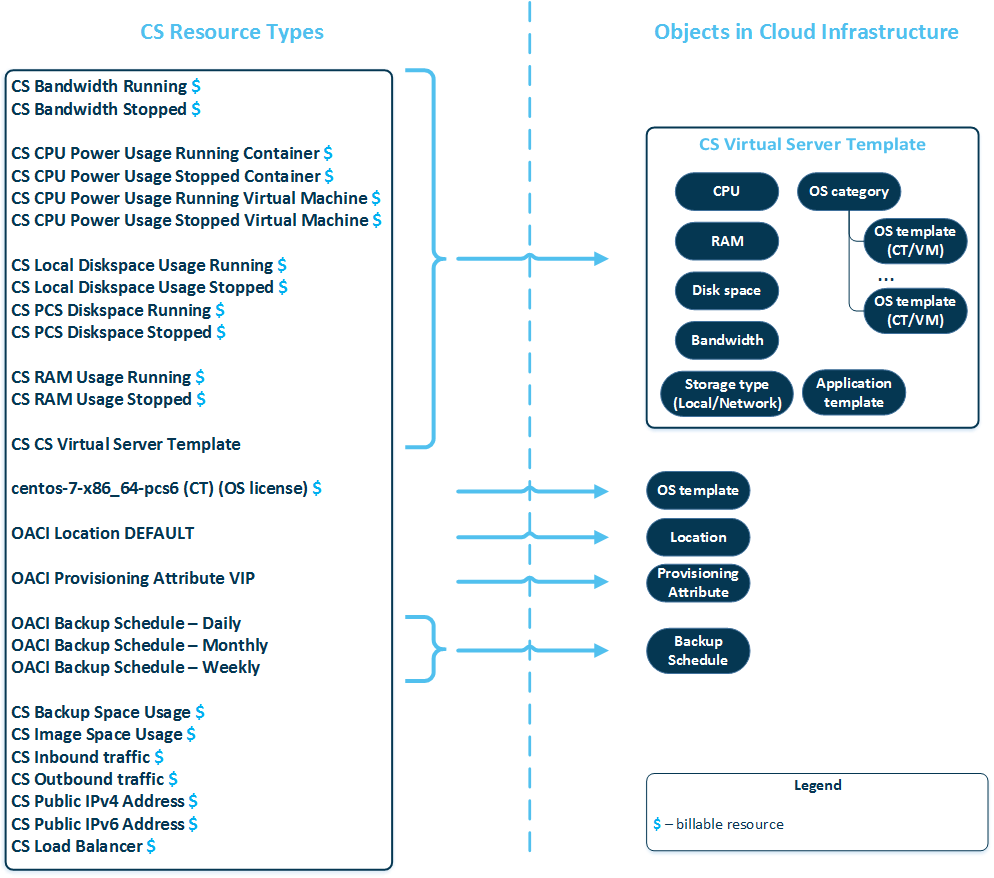How to Configure CS Hosting
After deploying the Cloud Infrastructure Automation, you are right away ready for selling cloud servers.
If you want to sell Windows or Linux virtual machines, you must first prepare VM OS templates. To learn more about creating VM OS templates, please refer to the Preparing OS Templates.
As opposed to the CI resource model, you do not have to manually configure resource types, as there are respective objects in the Cloud Infrastructure Automation for you to configure instead. The resource-object model for CS Hosting is shown below.

CS Hosting service template is the set of CS resources required for selling cloud servers.
Cloud Infrastructure Automation has objects that simplify the configuration of the CS Hosting model:
-
Virtual server template defines:
- Cloud server resource limits and adjustment step.
- OS categories: a group of operating systems. For example, Linux or Windows.
- Type of storage: local or network. Local denotes that cloud servers are stored on local disk drivers. Network denotes that cloud servers are stored in a Virtuozzo storage cluster.
- OS template(s): an operating system and a standard set of applications to be found after installation.
- Configuration preset(s): predefined hardware configuration of a cloud server (CPU, RAM, disk space and bandwidth). It is used for facilitating the process of purchasing a cloud server.
- Application template(s): a set of software packages re-packaged for use in the Cloud Infrastructure module. You use application templates to add extra software to the existing cloud server, for example, MySQL, PostgreSQL and others.
- Backup schedules: schedules according to which automatic virtual server backups will be performed.
- Location defines a geographical location of a virtualization node where a virtual server will be provisioned.
- Cloud Infrastructure Automation provisioning attributes are used to distribute virtual servers among the hardware nodes within one location by some criteria. For example, you can differentiate your hardware as servers with SSD or common HDD, high bandwidth or common bandwidth and so on.
You can use the default CS Hosting templates and plans or create your own ones from scratch.
To configure your CS Hosting resource model from scratch, you need to:
- Prepare your OS templates and application templates and register them in Cloud Infrastructure Automation.
- Create your CS virtual server template, backup schedules, locations, Cloud Infrastructure Automation provisioning attributes and default firewall rules.
- Create your CS Hosting service template, using the Service Template Creation Wizard.
- Create your CS Hosting service plan, using the Service Plan Creation Wizard.